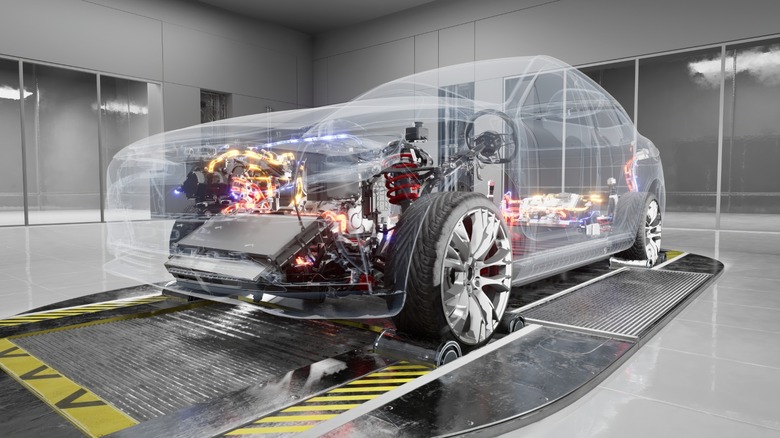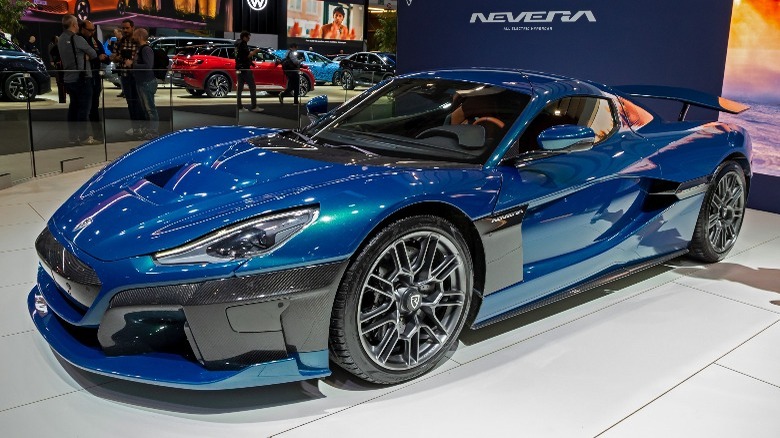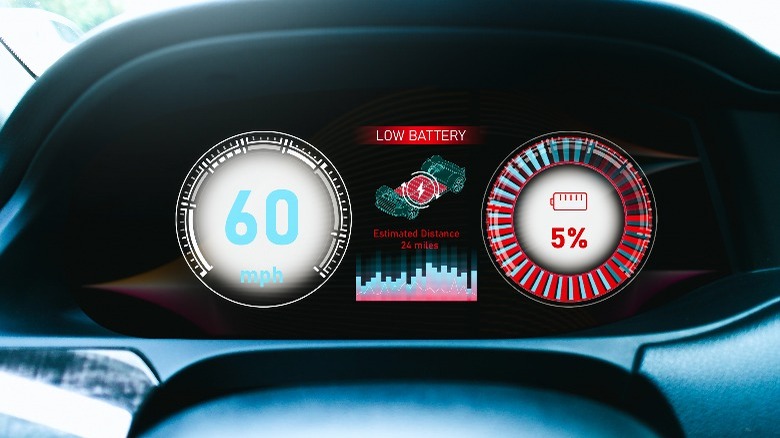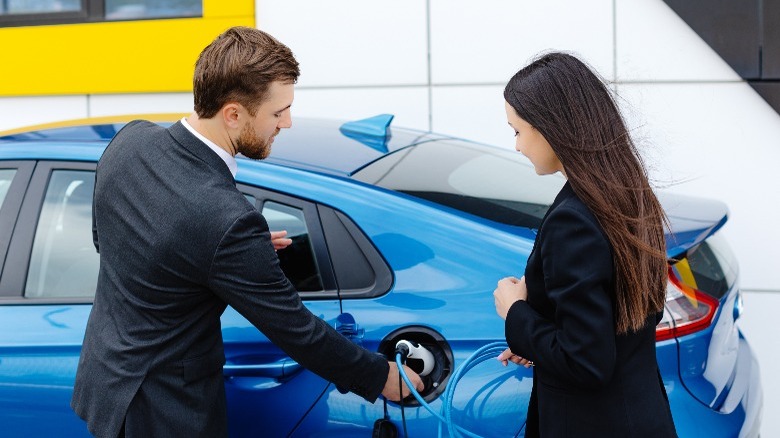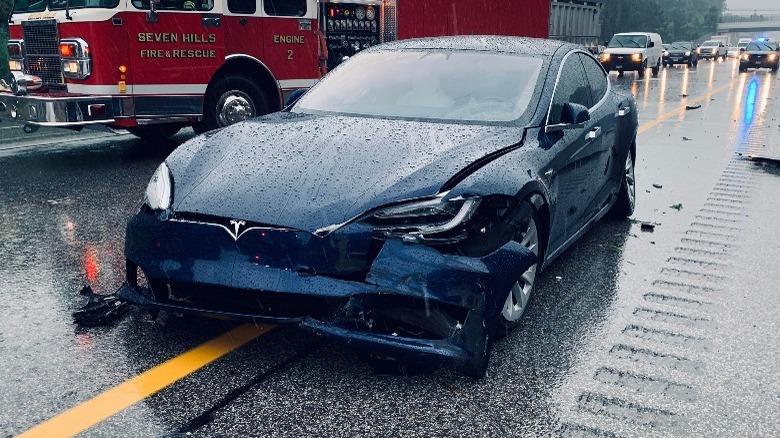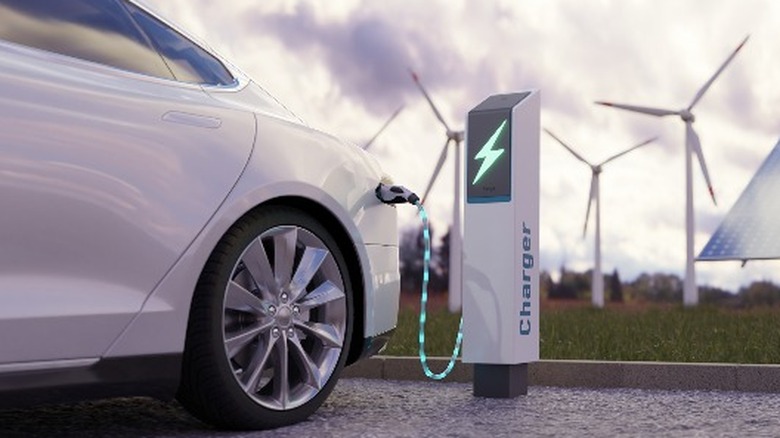6 Common Electric Vehicle Myths You Need To Know The Facts About
Electric vehicles often get a bad rap. The factions against them are numerous and well-spoken. ICE enthusiasts, corporate fossil fuel entities, and the media houses associated with these anti-EV factions are good examples. All of these people have found certain key characteristics about EVs that are kind of true and purported them into erroneous facts that have now evolved into long-standing myths.
The problem with these myths is that they can grow and entrench themselves firmly into the minds of the uninformed, the masses, people who aren't really interested in doing the research. Because if they do their research and choose a car for any reason close to practicality, they'll see that these myths don't hold up. The world has greatly changed since the first few electric vehicles rolled off the production line. Battery technology has improved, more brands are going hybrid or fully electric, and green energy has become more proliferated.
Since the "Mythbusters" are no longer here to bust the myths, SlashGear will do you a favor and bust some of the most common myths you may have heard about electric cars today.
EVs are slow
2.6 seconds — that's how long it takes for a Tesla Cybertruck to reach 60 mph from a standstill. For context, this truck has a curb weight of almost 7,000 pounds, but its electric motor lets it move faster than any other truck out there. Its closest competitor in the truck category, the Rivian R1T, is also an electric vehicle that can hit the 60 mph mark in three seconds. When you translate that acceleration to combustion sports car terms, Tesla's overweight truck is quicker than a McLaren 720S from a fair launch.
When we leave trucks behind, the world's fastest-accelerating production car is also electric. Meet the Rimac Nevera, which can reach zero to 60 in less than two seconds. Combined with a top speed of about 258 mph, this electric hypercar has earned its high rank on the list of the fastest production cars in the world.
There's no aerodynamic trick nor extraordinarily rare weightless chassis. Actually, electric vehicle batteries weigh the cars down considerably more. No, this acceleration is all thanks to the electric motor. Whereas regular ICE cars need time to build engine rpm to reach the ideal torque for acceleration, electric motors get torque sent to the wheels immediately after you press the accelerator.
EVs have a very limited range
Historically, electric vehicles have been notorious for not having a reliably long range for practical driving. Cars like General Motors' EV1 and the first-generation Toyota RAV4 EV generally did about 100 miles. However, these cars were sold in the late '90s and early 2000s, and batteries and the cars housing them have changed significantly. In fact, by 2008, we had a highway-legal, fully electric car that could do 200 miles, introduced by none other than Tesla.
Many of the old cars that you can blame for this "EVs have limited range" rumors didn't even have lithium-ion (Li-on) batteries — which are the batteries in modern EVs. Instead, they used either lead-acid or nickel-metal hydride (NiMH) as the base chemicals for batteries, which aren't nearly as efficient as Li-on. Nonetheless, the contributions of these older cars have shaped the new Tesla-dominated future of EVs. We should be grateful for them; they literally crawled so the cars today can run.
Recently, Bloomberg reported that electric cars in the U.S. have an average range of nearly 300 miles. That's close to the estimated 250 to 350 miles gasoline cars can get on average (although this number could be significantly higher for hybrid cars). When you combine this with the fact that there are now charging stations laced along major routes here in the U.S., EVs are almost as good as their non-electric counterparts.
EVs are expensive
To be completely fair, EVs typically cost more upfront than gasoline cars. Kelley Blue Book published data sourced from its parent company, Cox Automotive, stating that the average price of EVs is $53,469 compared to $48,334 for gas-powered vehicles in the last quarter of 2023. But you should know that the price of EVs has been falling steadily. For example, between August 2022 and August 2023, the average EV price dropped by a whopping 18.7% (largely due to Tesla's price cuts). In no time, EV upfront prices will reach ICE car prices and perhaps even beat them.
Furthermore, federal and state tax incentives reach up to $7,500 for buying select new electric cars and $4,000 for some used cars. If you factor this in, you might be able to get an electric car even cheaper than you may have spent on a gas-powered one.
Now that the upfront cost is out of the way, the real cost-saving happens in the long term. There's a Forbes piece explaining how electric cars cost less than half as much to drive. Apart from the fact that you don't need to buy gasoline, fully electric cars require less maintenance. They have fewer moving parts, and the system is much less complicated than that of gas cars. Electric vehicles don't need engine oil; they have no combustion, therefore no complicated exhaust system, and no extra bits to maintain and replace, like spark plugs, air filters, timing belts, etc.
EVs aren't safe to drive
EVs are as safe to drive, if not safer than ICE cars. Even though it's rare, it's true that the batteries in electric vehicles could spontaneously catch fire when they sustain damage that leads to a short circuit. However, ICE cars also contain batteries that could short-circuit with the combination of a highly flammable fuel tank somewhere inside the car.
Using Tesla as a case study, the company installs the car's battery somewhere on the vehicle's floor. This allows for better crumple zones around the car and makes it far less likely for the battery to get damaged in case of an accident. It also has safety systems that help isolate fire outbreaks in the battery and push heat away from the passengers. Tesla's battery location and fortified structure are some of the reasons why the Model 3 was the car with the lowest probability of injury in 2018.
Also, Tesla, being so proud of its safety achievements, has published records on its car's safety per million miles. According to the data on Tesla's website, from 2012 to 2021, there's only been one Tesla fire for every 210 million miles a Tesla car has traveled. Whereas ICE cars get into one fire for every 19 million miles they travel. It's still worth considering that Teslas are generally not as old and tested as combustion cars, so the likelihood of fires may rise with age. But for now, they're pretty safe. While we didn't display data for other EV car brands, you should know that according to Investopedia, Teslas account for around half of the electric vehicles in the U.S.
EVs aren't any greener than ICE cars
You'll sometimes hear people say that producing lithium-ion batteries for EVs is horrible for the environment. People might also say that the electricity generated to charge EVs is from fossil fuels anyway. So, how exactly are these vehicles helping the planet when they rely on destructive methods?
For starters, the key thing to take home is that the pollution from EVs is a lot less than from ICE cars. Also, the idea that most car owners in the U.S. are powering their EVs using fossil fuels is only a myth. In the past decade, there has been a strong proliferation of renewable and green power sources. This means that many EVs today are powered through eco-conscious means, and the number will only rise thanks to climate change and emissions legislation.
But for you to properly appreciate how efficient EVs are, we must highlight how inefficient combustion engines are. ICE cars are only about 40% efficient at best (most are around 12% to 30%); the remaining 60% of efficiency is lost to heat. Even with modern breakthroughs in engine technology, many combustion engine cars haven't crossed that 50% margin. On the other hand, the U.S. Department of Energy states that EVs use 77% of the energy they take from charging to power the wheels.
EV batteries have a short lifespan and will end up in landfills
While the battery in your iPhone and the one in an EV are both lithium-ion batteries, it doesn't mean they have the same lifespan. As a standard, EV brands in the U.S. offer a battery and drive unit warranty spanning at least eight years or 100,000 miles, whichever comes first. That means you'll likely have your electric car covered by warranty throughout your ownership as a first owner.
Inevitably, the battery will eventually fail, though. Lithium-ion batteries lose a little of their potency with each charge cycle. This failure rate is greatly reduced due to the robust battery management system in EVs that strictly regulates charging and discharging. In fact, Tesla's warranty extends to batteries that lose 70% of their charge capacity, meaning that the manufacturer is confident that over the course of eight years or 100,000 miles, the battery will still have at least 70% of its potency.
When an EV battery reaches a point where it can no longer be used in an EV, they're not thrown away. Instead, they can be repurposed as battery units for solar-powered homes and the like. Nissan, for instance, uses batteries from the Leaf as backup power units in the Johan Cruijff Arena in Amsterdam. When the batteries fail entirely, they can be recycled and used to make new batteries through the burgeoning battery recycling industry. It makes both economic and ecological sense.
